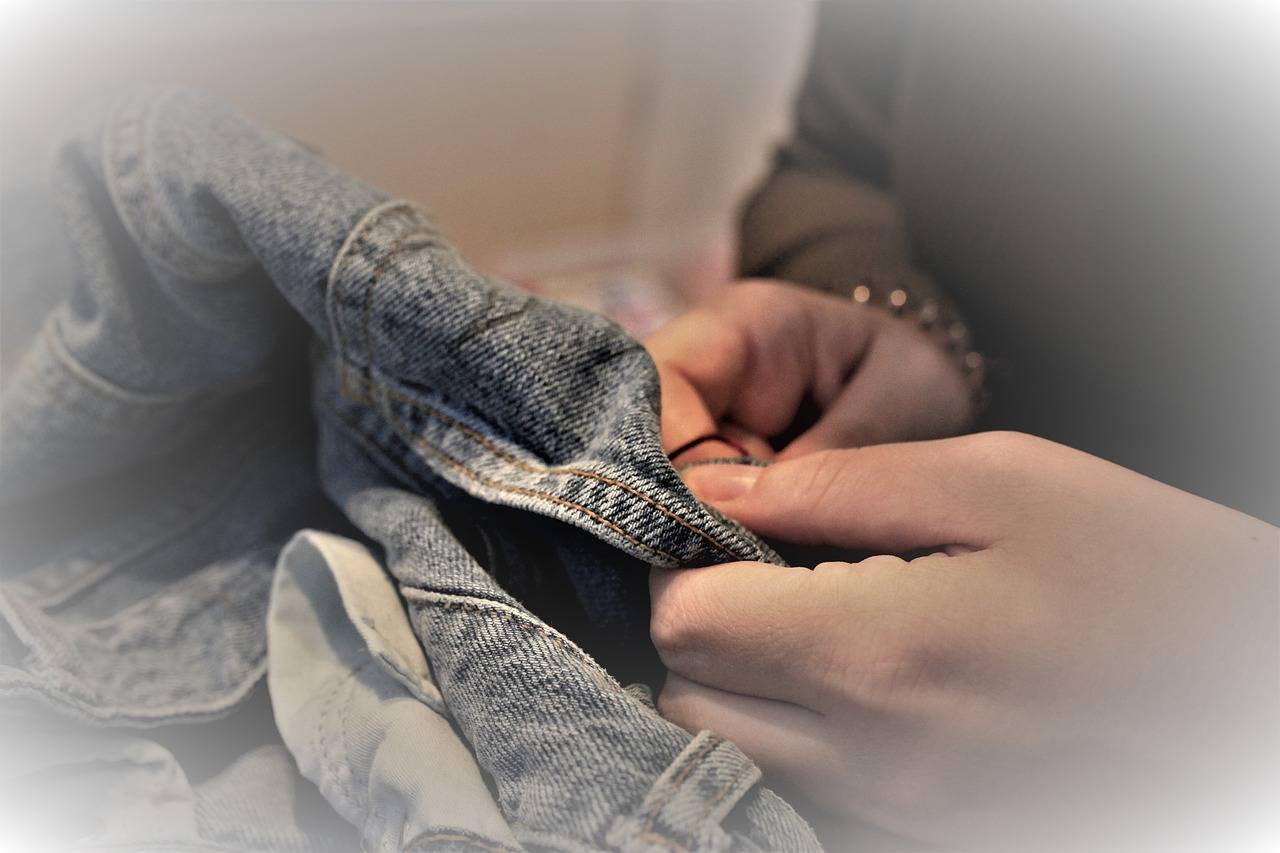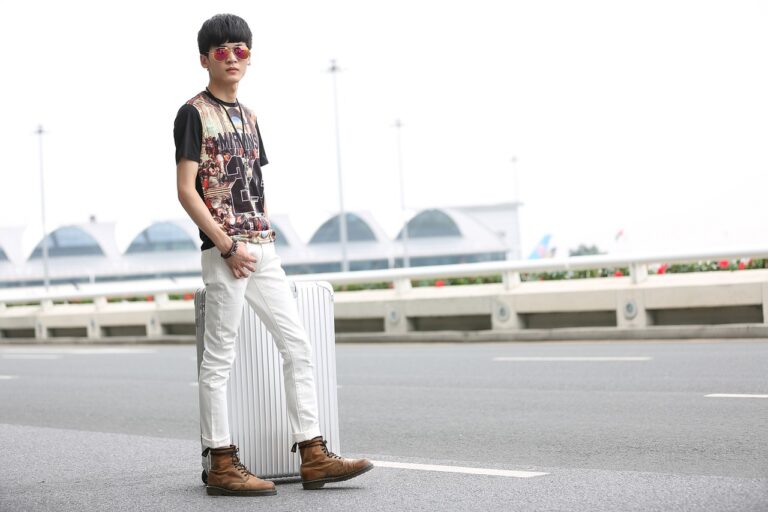The Impact of Textile Innovations on Baby Clothing
laser book login, silverexchange.com login, 11xplay online:The Impact of Textile Innovations on Baby Clothing
When it comes to baby clothing, comfort and safety are top priorities for parents. From the softness of the fabric to the durability of the materials, every aspect of baby clothing is carefully considered to ensure the wellbeing of our little ones. In recent years, textile innovations have played a significant role in revolutionizing the baby clothing industry. These advancements have not only improved the quality and functionality of baby clothes but have also had a positive impact on the environment and the overall consumer experience.
In this blog post, we will explore the various ways in which textile innovations have changed the way we dress our babies and the benefits they bring to both parents and the environment. From sustainable fabrics to smart textiles, these innovations have paved the way for a brighter and more comfortable future for our little ones.
The Rise of Sustainable Fabrics
One of the most significant developments in the textile industry in recent years has been the rise of sustainable fabrics. With the growing awareness of environmental issues, many parents are turning to eco-friendly options for their baby’s clothing. Sustainable fabrics such as organic cotton, bamboo, and hemp are not only better for the environment but are also softer and gentler on a baby’s delicate skin.
Organic cotton, in particular, has become a popular choice for baby clothing due to its non-toxic production process and soft texture. Grown without the use of harmful pesticides and chemicals, organic cotton is not only better for the environment but also reduces the risk of skin irritation and allergies in babies.
Bamboo is another sustainable fabric that has gained popularity in recent years. Known for its softness and breathability, bamboo clothing is perfect for babies with sensitive skin. Bamboo is also a fast-growing and renewable resource, making it an eco-friendly choice for environmentally conscious parents.
Hemp is another sustainable fabric that is making waves in the baby clothing industry. Hemp is a durable and versatile fabric that is perfect for baby clothing due to its antimicrobial properties and natural UV protection. Hemp is also a low-impact crop that requires minimal water and pesticides, making it a sustainable choice for eco-conscious parents.
Overall, the rise of sustainable fabrics in the baby clothing industry has had a positive impact on both the environment and the health of our little ones. By choosing eco-friendly options, parents can feel confident that they are making a responsible choice for the planet and their baby’s wellbeing.
The Advent of Smart Textiles
In addition to sustainable fabrics, smart textiles have also played a significant role in transforming the baby clothing industry. Smart textiles are fabrics that are embedded with electronic components or sensors to enhance the functionality of the garment. From temperature-regulating fabrics to moisture-wicking materials, smart textiles have revolutionized the way we dress our babies.
Temperature-regulating fabrics are one of the most exciting developments in smart textiles for baby clothing. These fabrics are designed to adapt to the baby’s body temperature, keeping them cool in hot weather and warm in cold weather. This technology helps to ensure that babies are comfortable and cozy at all times, reducing the risk of overheating or chilling.
Moisture-wicking fabrics are another innovative development in smart textiles for baby clothing. These fabrics are designed to wick away moisture from the baby’s skin, keeping them dry and comfortable. This helps to prevent skin irritation and rashes, particularly in babies who are prone to eczema or other skin conditions.
Overall, smart textiles have transformed the way we think about baby clothing, making it more functional and practical than ever before. By incorporating electronic components and sensors into fabrics, parents can now dress their babies in clothing that not only looks cute but also provides added benefits such as temperature regulation and moisture-wicking properties.
The Benefits of Textile Innovations for Parents
The impact of textile innovations on baby clothing extends beyond just the fabric itself. These advancements have also brought a range of benefits to parents, making it easier and more convenient to dress their little ones. From easy-care fabrics to gender-neutral designs, textile innovations have simplified the process of choosing and caring for baby clothing.
Easy-care fabrics, such as stain-resistant and wrinkle-free materials, have made it easier for parents to keep their baby’s clothes clean and looking new. These fabrics are designed to withstand repeated washings and wear, making them a practical choice for busy parents. By choosing easy-care fabrics, parents can spend less time worrying about laundry and more time enjoying precious moments with their little ones.
Gender-neutral designs have also become increasingly popular in the baby clothing industry. Many parents are moving away from traditional pink and blue color schemes in favor of more neutral and versatile options. Gender-neutral designs allow parents to dress their babies in a variety of colors and styles without conforming to outdated gender stereotypes. This shift towards gender-neutral clothing not only gives parents more freedom to express their personal style but also promotes inclusivity and diversity in the baby clothing industry.
Overall, textile innovations have made it easier and more convenient for parents to choose and care for baby clothing. From easy-care fabrics to gender-neutral designs, these advancements have transformed the way we dress our little ones, making the process more enjoyable and stress-free for parents.
The Impact of Textile Innovations on the Environment
In addition to the benefits for parents and babies, textile innovations have also had a positive impact on the environment. Sustainable fabrics such as organic cotton, bamboo, and hemp have reduced the carbon footprint of the baby clothing industry, promoting a more eco-friendly and sustainable approach to fashion.
Organic cotton, in particular, has been instrumental in reducing the environmental impact of conventional cotton production. By eliminating the use of toxic pesticides and chemicals, organic cotton has helped to protect the soil and water quality, as well as the health of farmers and workers. Organic cotton also requires less water and energy to produce, making it a more sustainable choice for the environment.
Bamboo is another sustainable fabric that has had a positive impact on the environment. Bamboo is a fast-growing and renewable resource that requires minimal water and pesticides to grow. Bamboo also has natural antibacterial properties, reducing the need for harmful chemicals in the production process. By choosing bamboo clothing for their babies, parents can feel confident that they are making a responsible choice for the planet.
Hemp is yet another sustainable fabric that has helped to reduce the environmental impact of the baby clothing industry. Hemp is a low-impact crop that requires minimal water and pesticides to grow. Hemp is also a strong and durable fabric that is perfect for baby clothing, reducing the need for frequent replacements and excess waste. By choosing hemp clothing for their babies, parents can contribute to a more sustainable and eco-friendly fashion industry.
Overall, textile innovations have played a critical role in promoting sustainability and reducing the environmental impact of the baby clothing industry. By choosing eco-friendly options such as organic cotton, bamboo, and hemp, parents can help protect the planet for future generations while dressing their babies in safe and comfortable clothing.
FAQs
Q: Are sustainable fabrics more expensive than conventional fabrics?
A: While sustainable fabrics such as organic cotton and bamboo may be slightly more expensive than conventional fabrics, the benefits they bring in terms of quality, comfort, and environmental impact far outweigh the cost. Additionally, with increasing demand for sustainable options, prices are becoming more competitive, making eco-friendly clothing accessible to a wider range of consumers.
Q: How can I care for smart textiles in baby clothing?
A: Smart textiles should be cared for according to the manufacturer’s instructions to ensure their longevity and functionality. It is recommended to wash smart textiles on a gentle cycle in cool water and to avoid using harsh detergents or fabric softeners. Allow smart textiles to air dry whenever possible to prevent damage to electronic components.
Q: Are there any safety concerns with smart textiles in baby clothing?
A: Smart textiles in baby clothing are designed with safety in mind and must meet strict regulations and standards to ensure they are safe for use. However, it is essential to inspect smart textiles regularly for any signs of wear or damage and to follow care instructions carefully to prevent accidents or injuries. If you have any concerns about the safety of smart textiles in baby clothing, consult the manufacturer or a healthcare professional for guidance.
Q: How can I recycle or dispose of old baby clothing responsibly?
A: To recycle or dispose of old baby clothing responsibly, consider donating gently used items to local charities or organizations in need. Alternatively, you can repurpose old clothing into new items or upcycle fabrics for crafts and projects. If clothing is no longer wearable, check with your local recycling center or textile recycling program to learn about proper disposal methods and recycling options.
Q: What should I look for when choosing baby clothing for sensitive skin?
A: When choosing baby clothing for sensitive skin, look for fabrics that are soft, breathable, and hypoallergenic, such as organic cotton, bamboo, and silk. Avoid fabrics with harsh dyes or chemicals that can irritate delicate skin and opt for tagless or seamless designs to prevent chafing. Wash all new clothing before use to remove any residual chemicals or irritants and consider using gentle, fragrance-free detergents to minimize the risk of allergies or skin reactions.
Q: How can I support sustainable practices in the baby clothing industry?
A: To support sustainable practices in the baby clothing industry, choose organic, eco-friendly, and fair trade options whenever possible. Look for certifications such as Global Organic Textile Standard (GOTS) or OEKO-TEX Standard 100 to ensure that products meet high environmental and social standards. Support brands that prioritize sustainability, ethical production, and transparency in their supply chain to help promote positive change in the fashion industry.
In conclusion, textile innovations have had a transformative impact on the baby clothing industry, revolutionizing the way we dress our little ones and shaping a more sustainable and eco-friendly future for generations to come. From sustainable fabrics to smart textiles, these advancements have improved the quality, comfort, and functionality of baby clothing while also benefiting parents and the environment. By choosing eco-friendly options and supporting sustainable practices, parents can help protect the planet and ensure a brighter future for their babies.







